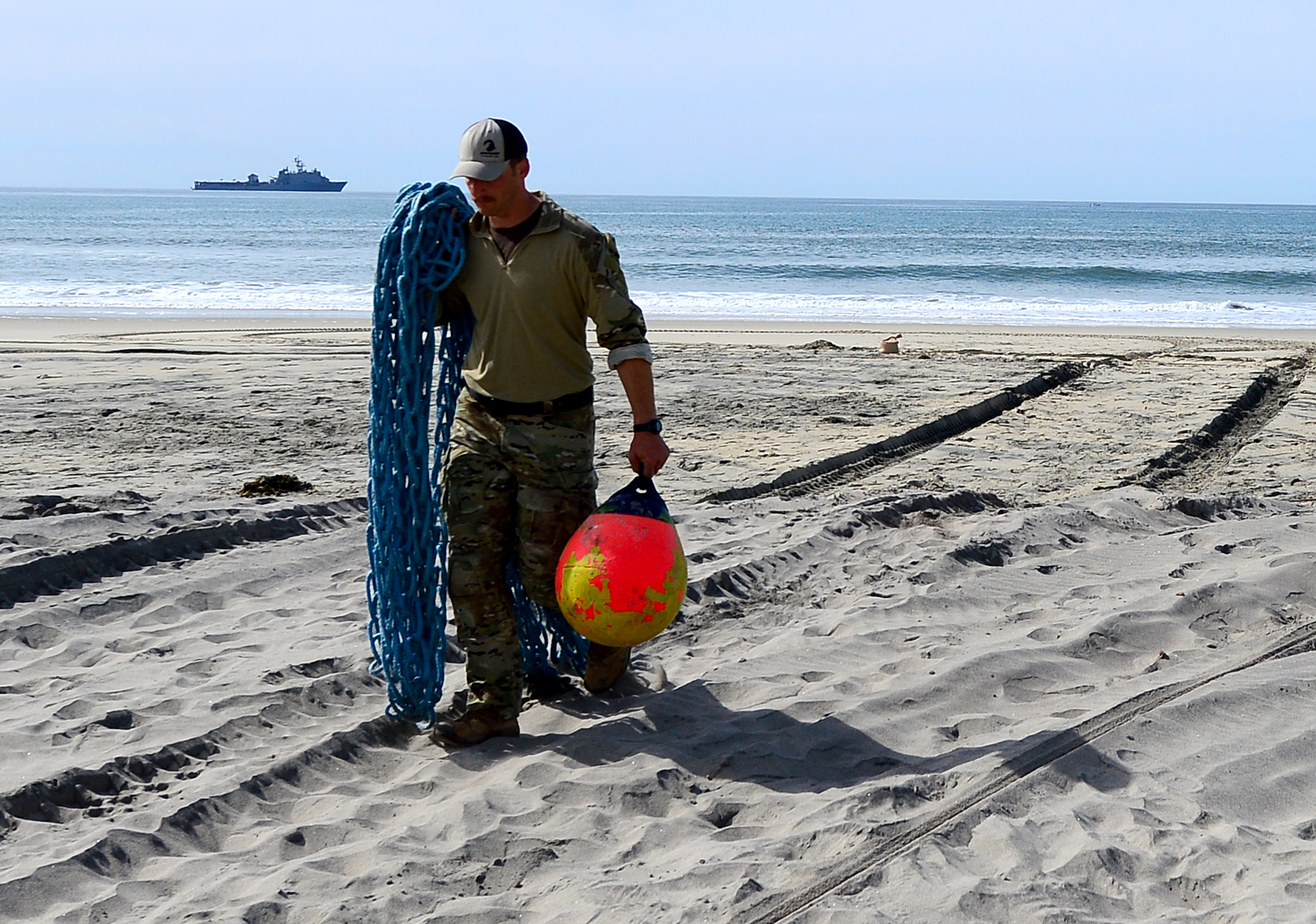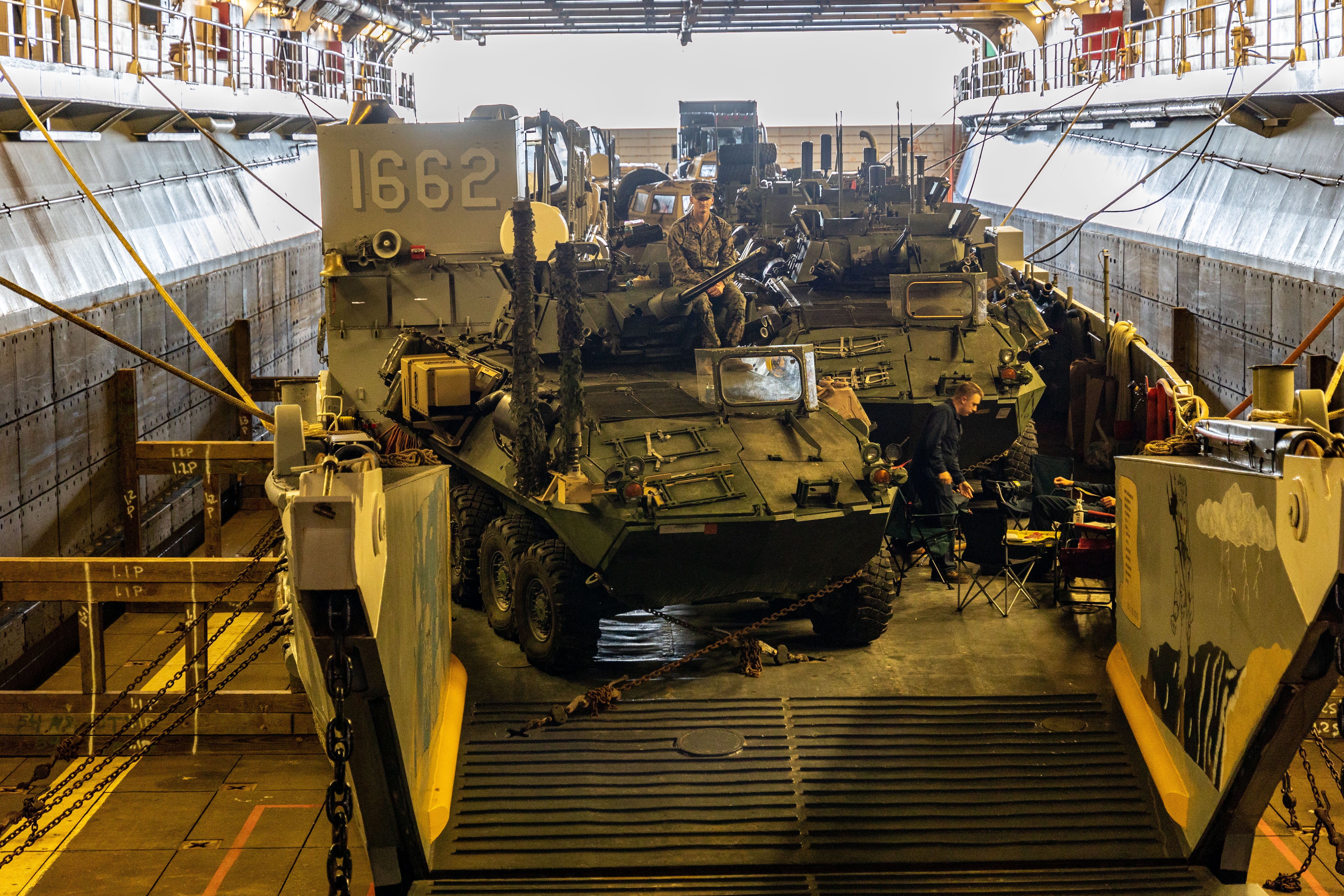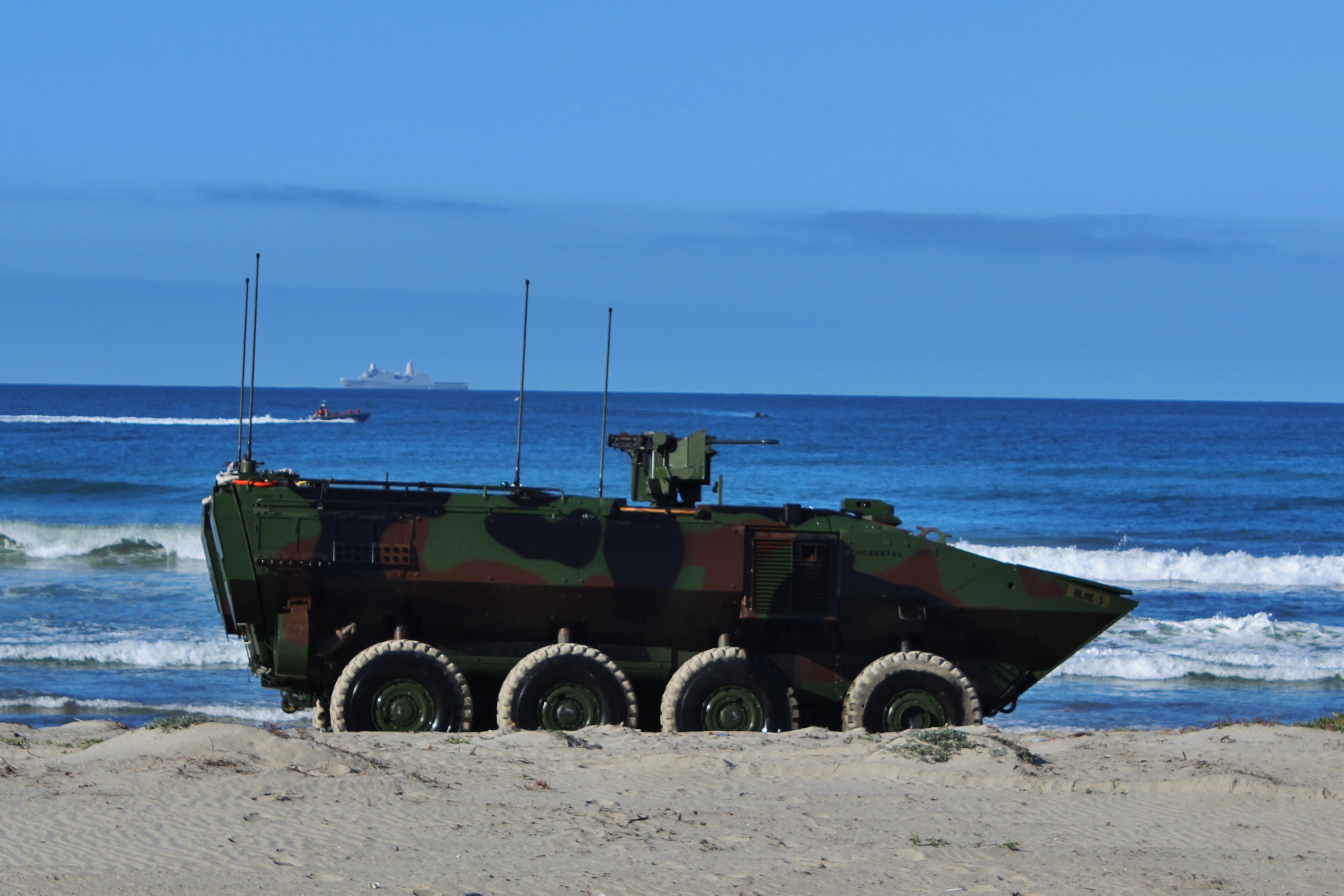
Amid a delay in fielding the Marine Corps’ new Amphibious Combat Vehicle program, sailors and Marines are adjusting how they move Marines ashore.
Last summer, the three ships in the Makin Island Amphibious Ready Group became the first U.S. Navy vessels certified to operate the new ACVs. But a late-stage change ahead of their deployment meant the ARG and the 13th Marine Expeditionary Unit would deploy without the new armored vehicles that are able to swim from an amphibious warship to shore across the open ocean.
During the last amtrac age, the Marine Corps’ amphibious assault doctrine called for two-thirds of Marines to hit the shore from the sea, while a third of the force would fly. But without the AAVs or ACVs, the Marine Corps is rethinking how to deploy Marines ashore. In the interregnum between the amtracs and the new ACV, the MEUs have adapted to employ other ship-to-shore capabilities.
The Makin Island ARG/MEU – which has been deployed to the Indo-Pacific for the last seven months – has instead relied on its five Landing Craft Air Cushions and one Landing Craft Utility to land Marines ashore.
“We saw no degradation to any capability in our ship-to-shore connectors during any portion of the exercise,” Col. Samuel Meyer, the commanding officer of the 13th Marine Expeditionary Unit embarked with the Makin Island ARG, told USNI News in an interview last week.
The ability to pivot to the other platforms, for which the ARG/MEU also has certifications, demonstrates the nimbleness of the amphibious force, USS Makin Island (LHD-8) commanding officer Capt. Andria Slough told USNI News.

“I think that just goes back to show how agile these L-class ships, with their combined Marine compliment, really are. You can change that plan – it happened to change for deployment – but it can change for specific missions too. And we’ve seen that in the past, specifically with humanitarian aid, disaster relief, or small security packages that are needed wherever. Not everything’s a full-scale war. So we’re very scalable, very agile,” Slough said.
USS Makin Island (LHD-8) and amphibious transport docks USS John P. Murtha (LPD-26) and USS Anchorage (LPD-23) deployed in November as an ARG with the 13th MEU embarked. Since then, the ARG/MEU has participated in a host of exercises throughout the Indo-Pacific with regional allies and partners like Japan and the Philippines.
“When you have the change of a configuration, you don’t have a loss of capability. So it’s the team together that manifest this robust capability and it’s a team fight,” Meyer said.
A 2020 amtrac accident that killed eight Marines and a sailor off the coast of California’s San Clemente island upended the Marine Corps’ planned transition from the AAV to the ACV. The Marine Corps suspended AAV waterborne operations following the 2020 accident and permanently banned the Vietnam-era AAVs from waterborne operations in late 2021.

The Bataan Amphibious Ready Group and the 26th Marine Expeditionary Unit were slated to be the first East Coast ARG/MEU to deploy with the ACVs. But the ongoing operational pause meant the MEU had to rethink its ship-to-shore capabilities without the ACVs, one Marine told USNI News on an embark to Bataan last month.
In place of ACVs, Bataan was filled with the Marines’ LAV-25 light armored vehicles. The LAVs were both in the big deck’s vehicle stowage and packed aboard two LCUs in Bataan’s well deck. The amphibious assault battalion cross trained to operate 11-meter rigid hull inflatable boats, 26th MEU commander Col. Dennis Sampson told USNI News during an interview aboard Bataan in April.
“What we’ve done is taken Marines that are familiar with water operations from the amphibious assault battalion Navy coxswain courses to a high standard, and we also put them through a maintenance course that is associated with those 11-meter RHIBs,” Sampson said.
“We’re heavily reliant on our aviation assets to build combat power ashore. We’re more reliant on LCACs and LCUs but they’re not equivalent to tracks. We’d like to have those ACVs.”

It’s unclear when the Marine Corps will deploy the ACVs for the first time. After the service decided not to deploy the new vehicles with the 13th MEU, Marine Corps deputy commandant for combat development and integration Lt. Gen. Karsten Heckl said last year that the 15th MEU would be the first to deploy with the ACVs.
Last month, when announcing a new training unit to help with the ACV transition, the Marine Corps said it would not “speculate on future deployments,” but wants to focus on training the operators.
For now, the Marines out with the fleet feel they have what they need to achieve their missions.
“I don’t think there’s any capability lost for anything that we’ve done. We certainly look forward to the modernization of the ACV when it comes out, but that will be when it’s ready and that will be on a future MEU,” Meyer said.





